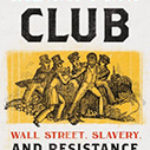Drug War Pathologies: Embedded Corporatism And U.S. Drug Enforcement In The Americas

Author: Horace A. Bartilow
Publisher: Durham, NC: University of North Carolina Press, 2019. 320p.
Reviewer: Miguel A. Cabañas | February 2021
Horace A. Bartilow writes a convincing, data-driven, and well-researched book on how the drug war is structured and fueled by the earnings of US corporations, who benefit both from cheap prisoner labor at home and resource extraction abroad, as well as weapons sales to Latin American security forces. Bartilow develops the conceptual and analytical tools that show how this embedded corporatist drug enforcement regime works and why the “failed war on drugs” that has not stopped the production, transportation and consumption of drugs continues to be supported by a system that benefits corporations greatly, accelerating the creation of illiberal democracies and establishing the power of what Bartilow labels as the military-prison-industrial complex.
The national security state pushes forward drug prohibition. American transnational corporations perceive US drug enforcement as a way to secure their investments abroad. This regime supports drug prohibition and converges the interests of national and foreign actors including think tanks, politicians, and corporations. Through research and policy development, these actors maintain the consensus on drug prohibition, and a U.S-funded drug war that is responsible for the increase of violence and crime in Latin America. Bartilow shows how the drug war is supported by corporations that dominate public policy decision making. For example, for Plan Colombia, US companies who have substantial investments in Colombia supported its militarization. This helped them assure more security for corporations such as ExxonMobil, Texaco and Britain’s BP Amoco, Drummond, and Enron among others, from Colombian insurgent attacks; other US corporations at home benefited from government contracts related to the upsurge of weapon sales. For example, United Technologies Co makes the Black Hawk; Textron Co has developed the Bell Huey II helicopter used for aerial fumigation programs; General Electric manufactures helicopter parts; and Northrop Grumman creates surveillance equipment, etc. Even with the increases of human rights abuses in Latin America, the US government, lobbied by these corporations, has increased the funding every year. The author also analyzes the elite networks of US Republican and Democratic administrations and how both have been intertwined with corporations benefiting from the drug war regime. Many members of the Clinton administration were connected to corporations that lobbied for Plan Colombia, and members of the George W. Bush administration, which signed the Mérida Initiative, had many of its members linked with corporations interested in the securitizing of their assets in Mexico. As Bartilow summarizes: “Corporate elite networks thus tied the Clinton and Bush administrations to defense contractors that had a huge financial stake in the congressional approval of Plan Colombia and the Mérida initiative” (44).
Besides lobbying and building networks, corporations also use think tanks to shape public opinion and build consensus on the drug wars. The Council on Foreign Relations, the Center for Strategic and International Studies, the Brookings Institution, the Project for the New American Century and the RAND corporation serve as mouthpieces that support the war on drugs and serve as a “revolving door” for policy actors that have ties both to corporations and the drug prohibition regime.
According to Bartilow: “The subsequent repression of human rights, the development of illiberal democratic regimes in Latin America, and the increase in income inequality throughout the Americas have become the unintended pathological consequences of the policy decisions of the corporatist drug enforcement regime” (103). Following journalist Dawn Paley’s Drug War Capitalism (2014), Bartilow analyzes how the expansion of transnational corporate investments in Latin America, especially of resource-seeking industries, use the drug war regime to appropriate Indigenous ancestral lands by colluding with local security forces, private security firms, and paramilitary squads to eliminate resistance to capital penetration. He provides multiple concrete examples such as the expansion of the pipeline for Occidental Petroleum and Drummond, using security forces under Plan Colombia, as well as how palm oil companies collude with the paramilitary group Autodefensas Unidas de Colombia to repress local communities — while at the same time, in exchange, these companies launder drug money for them. The drug war prohibition regime also strengthens unconstrained executive power in Latin America, and recipient governments of American counternarcotic aid were more likely to become illiberal democracies and more likely to violate civil rights and civil liberties. According to Bartilow, these illiberal democracies hold free and fair elections, but they “are more repressive than their military predecessors” (183).
Both in Mexico and Colombia, governments have been involved in repressive measures against trade unions, including violence, threats, and arbitrary detentions of their leaders and members. According to the author, by facilitating the repression of trade unions, the drug war increases income inequality by privileging the drug war over social programs that might bring upward mobility in Latin America. In turn, in the United States, Bartilow also connects the drug wars with corporate-convict capital accumulation. Drug incarceration has greatly increased during the drug war: “Drug offenders comprise 50 percent of the population of federal prisons and 60 percent of the population of state prisons” (192). The drug regime has created an underclass of people, barred from voting and marginalized. Given the racial disparities of the drug war, this has disproportionally affected communities of color. This rapid growth of incarceration has redirected states’ budgetary priorities away from education and toward funding private prisons. Sixty percent of the corporations in Bartilow’s study that are participating in the military industrial complex use prison labor. As he summarizes: “In essence, domestic drug enforcement in the United States creates the conditions that facilitate the growth of poverty and mass incarceration while increasing corporate revenues” (204). There are some new directions for reform, such as the Affordable Care Act mandating that health plans cover mental health and drug addiction. Bartilow proposes that legalization of drugs will reduce mass incarceration and income inequality in the United States. And in Latin America, legalization would reduce regime transition from liberal to illiberal democracies.
Drug War Pathologies points out the pitfalls of the drug war and its insidious and dangerous transformations in our societies. Horace Bartilow shows that the drug war is supported because of corporate profits, and not because of its ostensible efficacy nor certainly its morality. This thinking could constitute the start of dismantling a very dangerous myth.
Miguel A. Cabañas, Michigan State University


